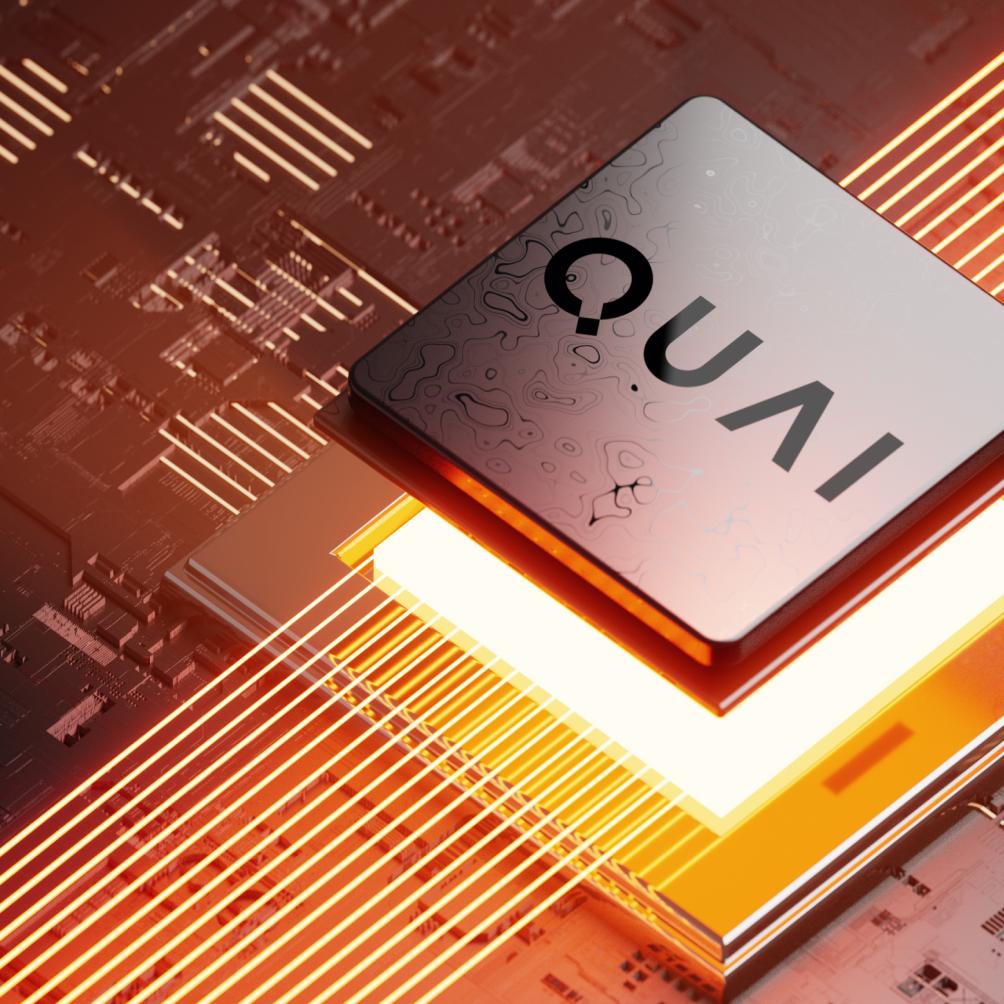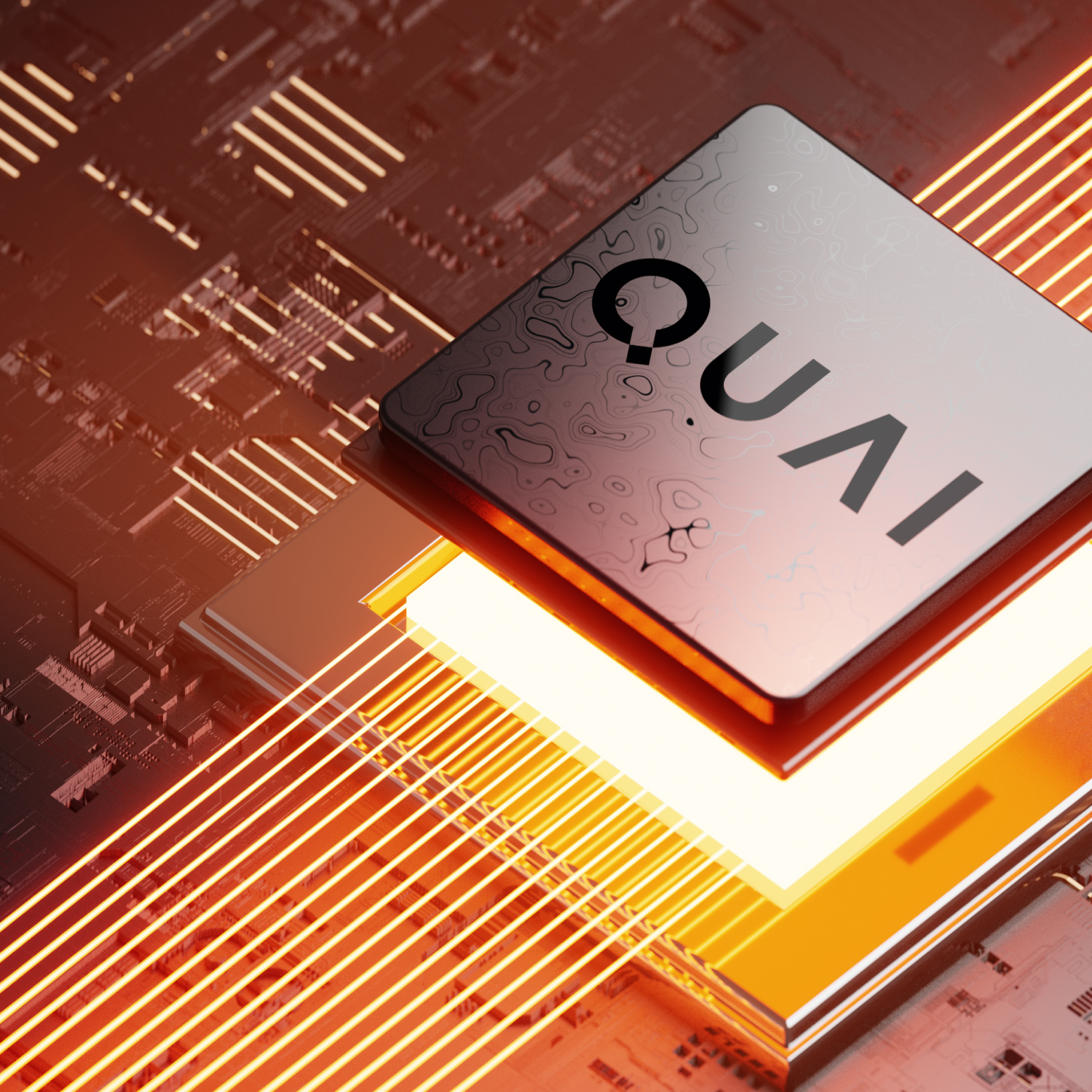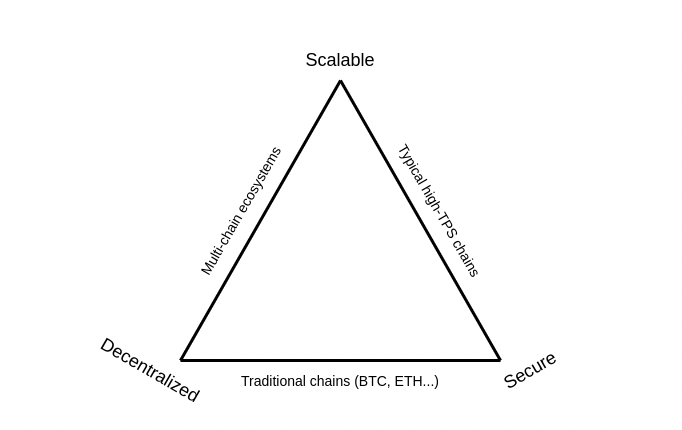
An intro to quai network addressing common questions, such as: What is Quai Network? What makes Quai different than other Layer 1s?

Overview
Quai Network is a Layer 1 network of blockchains based off of the BlockReduce Protocol released in 2018. Utilizing a novel combination of merged mining and sharding, Quai Network maintains high decentralization and security while achieving radical improvements in tps and throughput over traditional blockchains.
The Blockchain trilemma
The Blockchain Trilemma, or “Scalability Trilemma,” coined by Vitalik Buterin, refers to a theory that three key properties of a blockchain interact in a zero-sum game: decentralization, security, and scalability. Vitalik argues that existing blockchains must compromise in one of these areas, plotting some examples on the now-classic Trilemma graphic:

A modified version of this graphic can be used to plot existing Layer 1 blockchains, identifying where in the Trilemma they compromise:

At Quai Network, we believe that the blockchain of the future cannot compromise in any of these three critical areas. To learn more about how Quai exists outside of the Blockchain Trilemma, check out one of our previous articles: “Breaking the Blockchain Trilemma”.
How does quai work?
Quai Network exists as a Proof-of-Entropy-Minima network of chains organized in a hierarchical, “pyramid-shaped” structure. At the core of Quai Network’s security and functionality is the Prime Chain, which is mined by all miners. The Prime Chain has a high difficulty and low throughput.
In its current state, Quai Network has 3 Region Chains subordinate to the Prime Chain. Miners select one of these Region chains to mine, which have lower difficulty and faster throughput than the Prime Chain.
Quai Network also has 3 Zone Chains within each Region, marking a total of 9 Zone Chains in the existing network state. These Zone chains have low difficulty and extremely high throughput, making them ideal for day-to-day transactions and contract interactions.

To learn more about the unique properties of Quai Network’s chains, check out our article “What Are The Prime, Region, and Zone Chains in Quai Network?”
In order to ensure security is shared across all 13 chains, Quai Network uses “coincident blocks”. A coincident block is simply a block that is valid in multiple blockchains across Quai Network. Every valid Region block, for example, also contains a Zone block (and Prime blocks contain Region blocks), eventually tying all security back into the Prime Chain.

To learn more about how Quai Network utilizes Coincident Blocks, check out the original BlockReduce Whitepaper.
The beauty of Quai Network lies in its ability to natively bridge between chains. The merged mined structure of the network enables transferring of assets between chains, the potential to invoke cross-chain contracts, and more. By creating a unique, interoperable, completely decentralized network of blockchains capable of handling tens of thousands of transactions per second, Quai Network is attempting to make the next leap in blockchain innovation.
What’s next for quai?
Quai Network has planned 5 Testnets in the leadup to Mainnet Launch: the Stone Age, Bronze Age, Iron Age, Gold Age, and Silicon Age Testnets. Each of these Testnets will focus on different aspects of development, preparing the network for full public use.
To get involved with Quai Network Testnets, stay up to date on development updates, and participate in community giveaways, make sure to join our Discord.
You can also earn Mainnet Quai tokens before we even launch! Check out the Social Media Rewards Program to learn more about how you can be rewarded for contributing to the Quai Network ecosystem.
Once Quai Network undergoes Mainnet Launch, the token supply will be decreasingly inflationary, eventually transitioning to a deflationary supply. The majority of tokens are allocated to adoption incentives and miners. The Quai Foundation will utilize the tokens allocated to spur adoption as efficiently as possible, targeting nation-states, corporations, NGOs, and more.

To learn more about Quai Network’s preliminary tokenomics, check out our brief Tokenomics outline in our docs.
Join us to build a better blockchain.
Quai Network is an open-source Proof-of-Entropy-Minima blockchain network utilizing the capabilities of merged mining to increase throughput and security. Users of Quai Network will enjoy fast transaction times without compromising decentralization and security. Miners will have competitive mining opportunities across the many blockchains within the network.
Capable of thousands of transactions per second, the Quai Network is a new solution to scalability that is soon to be ready for mainnet release.
Terms & Conditions / Disclaimer
The entirety of the Quai Genesis grants program, including the content of this article, is subject to the Terms and Conditions outlined here.
Opinions, ideas, and statements shared in this update are delivered with numerous assumptions, risks, and uncertainties which are subject to change over time. There are multiple risk factors, including those related to blockchain, cryptographic systems, and technologies generally, as well Quai’s business, operations and results of operations, that could cause actual results or developments anticipated not to be realized or, even if substantially realized, to fail to achieve any or all of the benefits that could be expected therefrom. We reserve the right to unilaterally, completely, or partially change plans, expectations, and intentions stated herein at any time and for any reason, in our sole and absolute discretion, and we undertake no obligation to update publicly or revise any forward-looking statement, whether as a result of new information, future developments, or otherwise. ACCORDINGLY, WE RECOMMEND THAT YOU DO NOT RELY ON, AND DO NOT MAKE ANY FINANCIAL DECISION OR INVESTMENT BASED ON, THE STATEMENTS CONTAINED IN THIS UPDATE OR ANY OF OUR UPDATES/ARTICLES — INCLUDING BUT NOT LIMITED TO ANY SELLING OR TRADING OF QUAI TOKENS, ETHER, OR ANY OTHER CRYPTOGRAPHIC OR BLOCKCHAIN TOKEN, OR THE SECURITIES OF ANY COMPANY.
The views, opinions, and statements made in this update are those of an individual author and not those of any institution, University, or legal entity operating within the jurisdiction of The United States or beyond. There is no association between these views, opinions, and statements and any for-profit or non-profit entity, particularly with Universities, Foundations, and other Agencies located within the United States. Any perception of such an association is purely accidental, and will be rectified immediately if brought to our attention by the reader.
